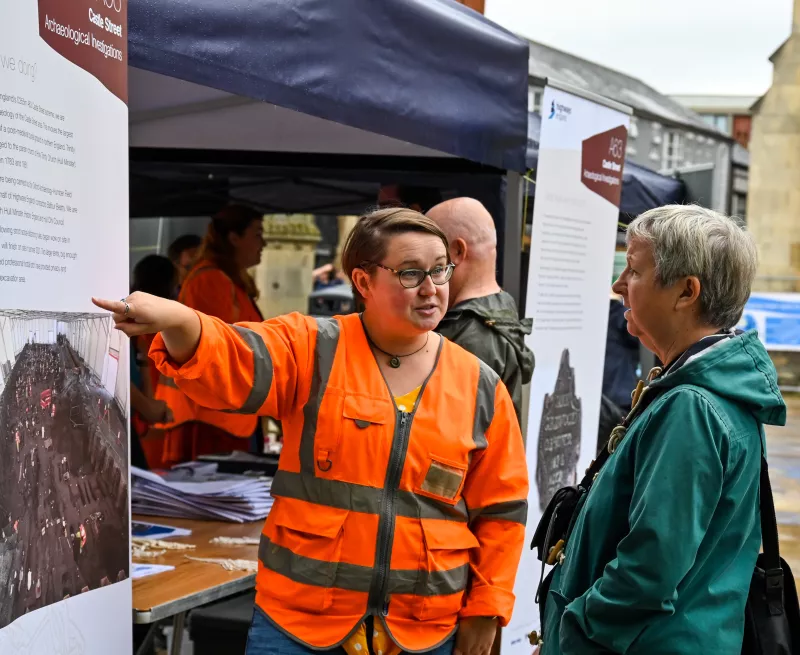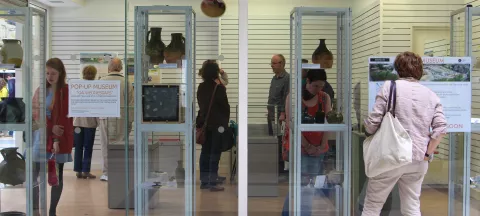Enhancing and delivering the social value of your project
Oxford Archaeology can provide valuable additional benefits to your project. We routinely work with our clients to help you meet your planning requirements, social value targets and corporate social responsibility goals in an efficient, effective and proportionate way.
We can help you to mitigate risks, develop and maintain trust and open communication with your stakeholders and create positive associations that will last beyond the delivery phase. We have seen how engaging with archaeology can bring communities together, increase individual wellbeing and aspirations, and create unique and attractive places to live, work and visit.
Whether as part of large infrastructure schemes or smaller housing developments, we have considerable experience of fulfilling planning requirements for public engagement. We work with our clients to produce and deliver social value strategies, and to measure and report the outcomes in line with social value frameworks, including National TOMs.
Oxford Archaeology employs dedicated community and communications staff who can work with you to maximise the opportunities from your project to inform and engage your stakeholders and make a difference to the individuals and community local to where you operate.
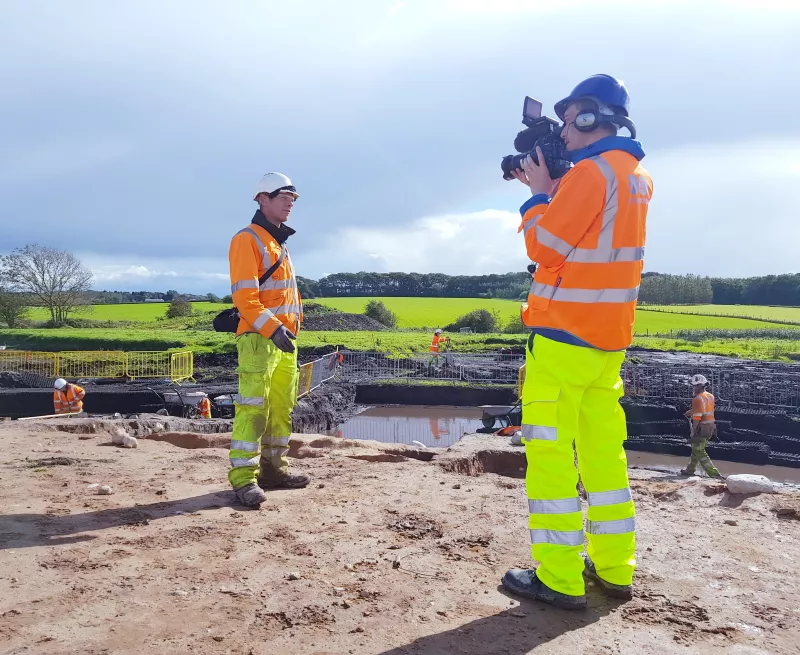
Heritage is the gift that keeps on giving as it consistently engages people in the process: from marketing, public relations, placemaking, through to school and community engagement. The rich tapestry of stories, finds and information from archaeology is a fundamental part of how we put heart and soul into our new communities.
Rebecca Britton - Regional Director for Communications, Communities and Partnerships at Urban&Civic
Case studies
The local authority with RPS Heritage, working on behalf of Rose Builders, proposed a series of public engagement activities to keep residents local to this new housing development informed about the findings from a Napoleonic-era military barracks on the site. Oxford Archaeology maintained an online ‘dig diary’ with information on the history of the site and regular updates from the archaeological team. Two talks were held in the village hall in partnership with the parish council, one at the start of works and another on completion of the excavation. Two site open days were held, one during the middle of the excavation and another at the end, as well as a separate visit from the local primary school.
The project team also worked with the Ministry of Defence to involve a group of Essex-based military veterans with associations with the regiments who were stationed at Weeley Barracks, as part of the Operation Nightingale Initiative to help rehabilitate current and former military personnel through archaeological investigations. Over a week, the volunteers worked alongside Oxford Archaeology to help excavate the brick foundations of a building located at the site.
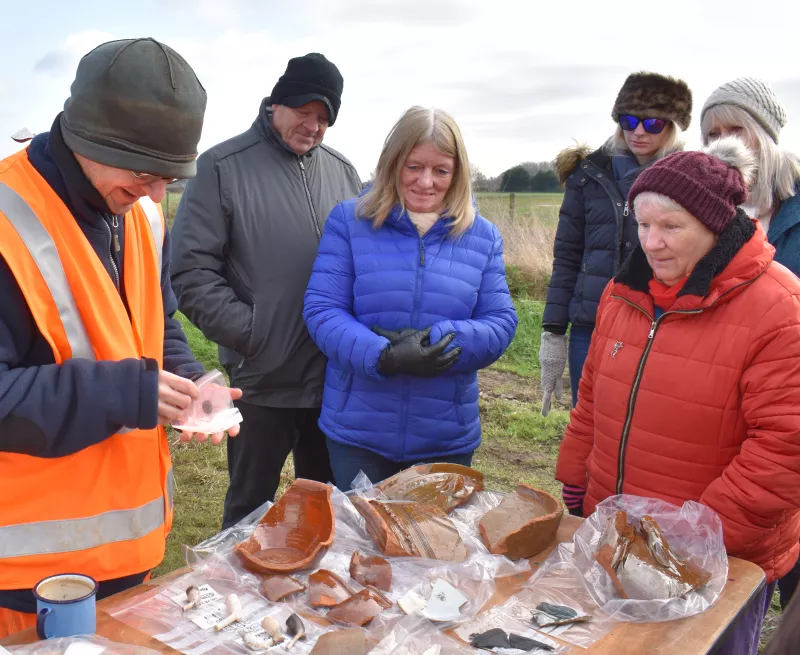
A large shopping complex in the heart of Oxford, its redevelopment and the excavation of a medieval Greyfriars priory received a high level of public interest. With input from a project advisory board, including the clients Westgate Oxford Alliance and principal contractors Laing O'Rourke, the city archaeologist and local stakeholders, among them the Oxford Preservation Trust, Oxford Archaeology devised an extensive award-winning programme of public engagement. This included a schools’ programme, talk series and site open days, attended by over 2500 visitors.
A ‘pop-up’ museum was developed as a public focal point. This was set up in four locations, including a vacant shop unit in the Westgate shopping centre and the Central Library, and later a gallery space at the Museum of Oxford, which was visited by over 5500 people. Oxford Archaeology worked with volunteers from the East Oxford community archaeology project to showcase finds from the Westgate excavations, and it became a hub for a multi-generational reminiscences project which was incorporated into a local art project.
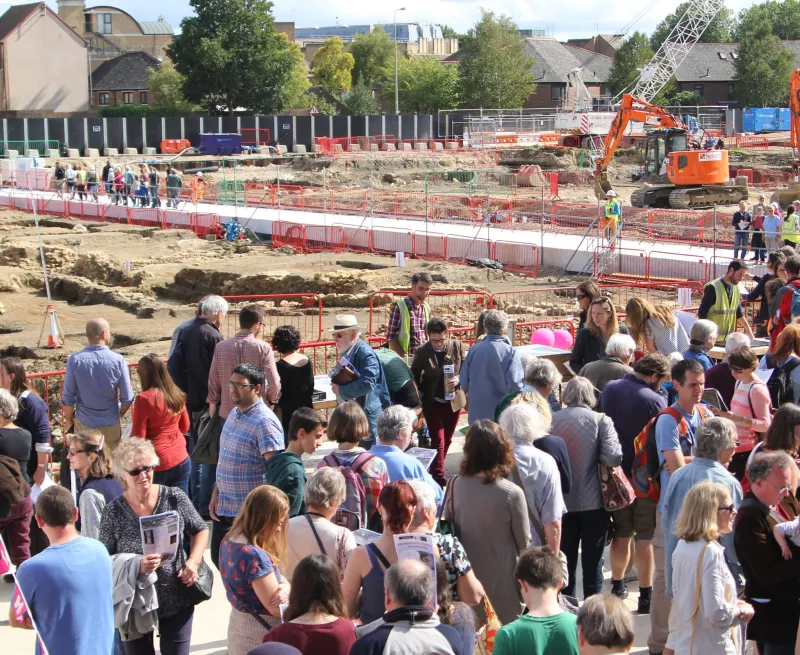
Alongside the largest excavation of a post-medieval burial ground in northern England, Oxford Archaeology, on behalf of National Highways and their contractors, Balfour Beatty, shared regular insights into the archaeological works and wider heritage of Hull and making a significant contribution to the social value targets of the road scheme.
Articles and videos were published on National Highways’ website highlighting initiatives such as British Science Week, while a series of webinars gave a glimpse behind-the-scenes and opportunities to ask questions of the archaeological team. Finds and activities were brought to the public during events for the Festival of Archaeology in partnership with Hull Minster and Hull and East Riding Museum. The project team have delivered STEM events at local primary schools and attended career days for Hull secondary schools.
